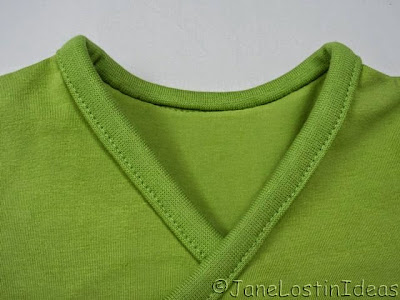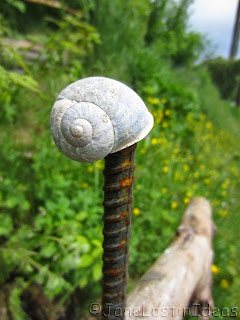When giving sewing classes in the evenings, it is quite good, when the students have already their fabrics pieces pre-cut. I found out that it takes a lot of time until everybody had cut out all the pieces and is ready to sew. Then when you are coming to the tricky parts of the project it is maybe already 10pm and the most persons are tired by then and their capacity to absorb a new technic is limited.
Means on the other hand, that I have to give very clear instructions to my students what to cut and prepare in advance. So it is homework for me and them.
Lately I made a detailed description about how to take measurements for sewing a cover for a file folder. You remember I made quite often covers for writing cases (have a look here) which is working with the same method. As I had to make the description for the sewing class in french (and one of my students have been so kind to correct the grammatical errors) I will give here for the first time instructions in two languages.
You have to know that every folder is different, even when they are marked to have the same format, folders from different producers are often slightly different in height or width. So your first step is always to measure the folder (or book or whatever you want to make the cover for)!
Measure the height and the length of the folder when it is closed. The length is shorter when the folder is open and lying flat. Measure carefully and in case it is not a straight value, round it up to the next 0,5cm. In my example I measured 62,3cm but used 62,5cm in the following.
Attention
les tailles change légèrement par producteur, mesurez votre classeur ou livre bien!
Mesurez
la largeur du classeur (ici 32 cm) et la longueur devant-côté-derrière quand le
classeur est fermé (important car si le
classeur est ouvert, la longueur est
plus courte et votre housse sera trop petite). La longueur ici est de 62,5 cm.
Arrondir au 0,5 cm supérieur – c’est mieux de découper trop grand que trop
petit!
Then you have to think about which extras you want to add to your cover, like pockets or pen holders or a closure. Have a careful look how much space there is. It is always a good idea to make a little drawing to not forget anything.
Ouvrez
votre classeur et réfléchissez si vous avez besoin de quelques extras à
l’intérieur comme des poches ou des places pour stylos et mesurez la place que
vous avez...
C’est
toujours bien d’avoir un petit dessin pour ne rien oublier.
In any case you will need a flap on both sides to hold the cover onto the folder. In my case there are two slits in the folder cover that should stay open, so I am limited for the width of the left flap.
For putting the folder in it's cover, you have to bend it a little over the point where it is lying flat. To not damage the folder by bending it too hard, I made the right flap smaller. And as this side is normally covered with papers I won't add anything to that flap.
To the right flap I want to add a pocket for letters and envellopes and two places to store pencils.
Pour
faire tenir la housse, vous avez besoin d’un rabat à gauche et à droite.
Mon
classeur a des trous (fentes) sur la face de devant que je ne dois pas
recouvrir. C’est pour cette raison que je suis limitée pour le rabat gauche.
Pour enfiler
le casseur dans sa housse, il faut le plier un peu dans la faut direction. Pour
limiter cette pliure, le rabat à droite sera plus petit.
Pour
ce modèle, je prévois une poche pour des enveloppes ou du courrier et deux
fixations pour stylos sur le rabat de gauche.
In any case you will need a flap on both sides to hold the cover onto the folder. In my case there are two slits in the folder cover that should stay open, so I am limited for the width of the left flap.
For putting the folder in it's cover, you have to bend it a little over the point where it is lying flat. To not damage the folder by bending it too hard, I made the right flap smaller. And as this side is normally covered with papers I won't add anything to that flap.
To the right flap I want to add a pocket for letters and envelopes and two places to store pencils.
Normalement
je fais les coutures à 0.75 cm de distance du bord du tissu. Je vais faire
pareil ici. Pour que la housse passe bien, j’ajoute 0.25 cm. Ça veut dire que
j’ajoute à la largeur du classeur, 1 cm en haut et 1 cm en bas. Soit pour ce
modèle taille de la largeur 32 cm + 1 cm en haut + 1 cm en bas = 34 cm. Je
faire pareille pour la longueur et ajoute 1cm à droite et 1cm a gauche.
Pour
les poches, il suffit d’ajouter 2 x 0.75 cm comme d’habitude.
This is giving the following sizes for my pieces:
Outside (visible when the folder is closed): 34cm x 64,5cm
Lining (not at all visible): 34cm x 64,5cm
Left flap: 34cm x 44cm (44cm = 21cm +1cm seam allowance x 2 because it will be folded to lay double)
Right flap: 34cm x 32cm (44cm = 21cm +1cm seam allowance x 2 because it will be folded to lay double)
Pocket: 2 times 15,5cm x 16,5cm
A little bit of elastic strap for the pencil holders
Découpages:
Extérieur
(visible quand le classeur est fermé) : 34cm x 64,5cm
Doublure
(pas du tout visible) : 34cm x 64,5cm
Rabat
gauche : 34cm x 44cm (44cm = 21cm+1cm fois 2 parce-que on plie en double)
Rabat
droit : 34cm x 32cm (32cm = 15cm+1cm fois 2 parce-que on plie en double)
Poche :
2 fois 15,5cm x 16,5cm
Pour
la fixation stylo un peu d’élastique
This is more or less what you need. There are no bounds to your imagination for how to decorate the outside or what to add to the flaps. I often piece the outside in patchwork style or I add applications. Do the composition for the outside first and then cut it to the right size.
You can add a closure too. Have a look to different possibilities in my previous examples.
In my next blog post (tomorrow) I will show you how my example turned out and how I put it together.
Vous
pouvez décorer votre extérieur avec des applications ou vous le composez de
plusieurs tissus différents. Faire ces compositions avant et découper à la
taille mentionnée.
Vous
pouvez ajouter une fermeture au classeur. Voyez quelques exemples dans mon blog ici.
Demain, je vais vous montrer mon housse exemple et comment je fait la couture.
A demain,
Jane










































